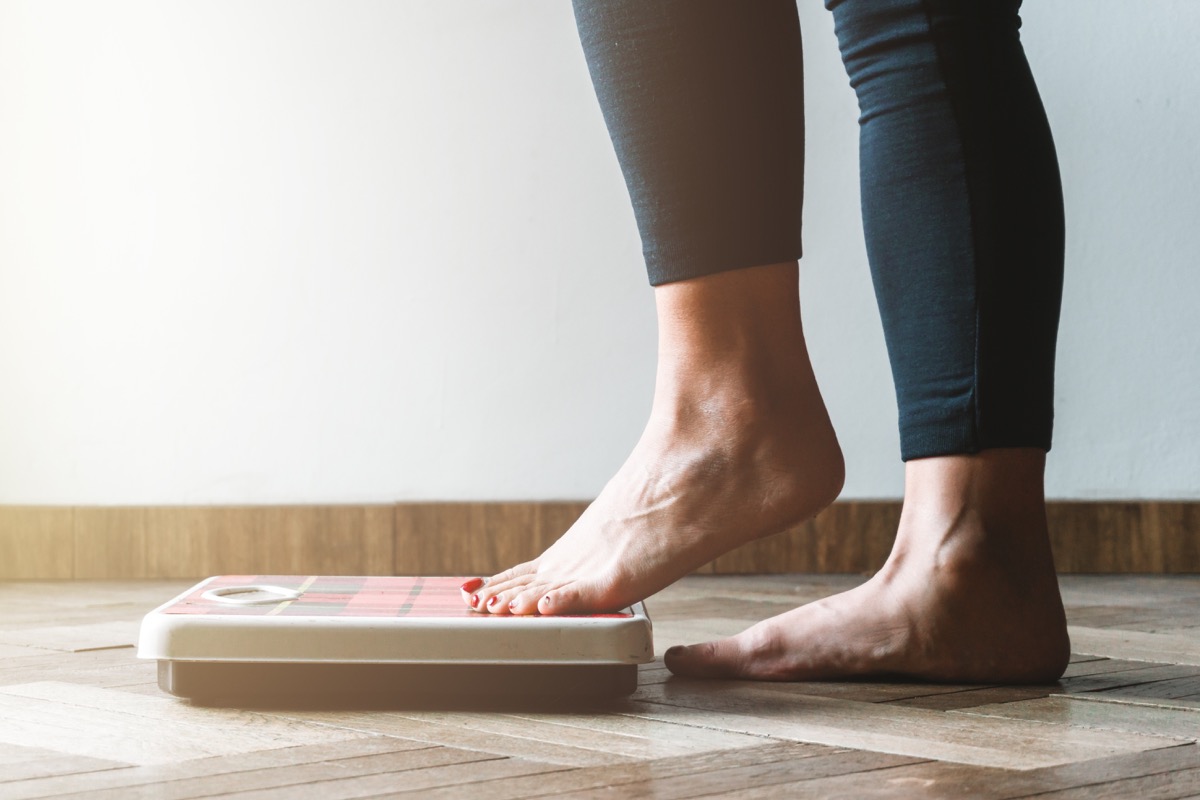The University of Minnesota researchers analyzed 31 clinical trials that evaluated the use of fitness trackers and step counters on weight loss, publishing their findings on March 17 in the British Journal of Sports Medicine. The study included data on 2,268 people who were overweight or diagnosed with obesity between 2007 and 2020. Each trial instructed the participants to set and meet goals based on steps per day or reach a recommended weekly minimum of 150 minutes of moderate-to-vigorous intensity physical activity, like brisk walking. According to the study’s findings, participants who used research-grade step counters and accelerometers over the course of 12 weeks lost an average of 10 pounds, while participants who wore commercially available fitness trackers still lost an average of a little more than 6 pounds. And for more on how to gauge your well-being, If You Can’t Do This in 90 Seconds, Your Heart Is in Danger, Study Says. While participants using research-grade tools lost the most weight on average, the public doesn’t necessarily have access to those. However, there are many wearable fitness trackers available for consumers to buy, the researchers note. The ones used in the research, for example, included Fitbit, SenseWear, Armband, Jawbone, Polar smartwatches, Samsung Charm FitMeter, and Withings Pulse. “While both commercial and research-oriented devices were effective for weight control, commercial wearables like the Fitbit are affordable, easily accessible and, based on our findings, require no other components to be effective,” study co-author D.J. McDonough, PhD, told UPI. And for more up-to-date health news and tips delivered straight to your inbox, sign up for our daily newsletter. In the study, both the fitness trackers and step counters resulted in an average two-point reduction in Body Mass Index (BMI)—a metric determined by your weight in kilograms divided by the square of your height in meters. But combining the trackers with other components, like counseling or making dietary changes, led to a BMI reduction of 3.4 on average. According to the Centers for Disease Control and Prevention (CDC), a BMI of 25 to less than 30 is considered overweight, while a BMI of 30 or higher falls within the obese range, and a BMI of 40 or higher is categorized as severely obese. The CDC notes that the prevalence of obesity in the U.S. is 42.4 percent, and 9.2 percent of Americans are severely obese. These statistics have risen substantially in the last 20 years: the prevalence of obesity was 30.5 percent in 2000, while severe obesity was 4.7 percent. And for more on what could be behind your weight gain, check out the 13 Surprising Things That May Be Causing You to Gain Weight, Doctors Say.ae0fcc31ae342fd3a1346ebb1f342fcb As the CDC states, people who are obese are at an increased risk for many serious diseases and health conditions, including diabetes, heart disease, stroke, and some types of cancer. But the researchers note that even “modest reductions in body weight” of just 5 to 10 percent “reduces health risks associated with overweight, obesity, and associated chronic diseases.” And for more health problems to be aware of, If You Feel This at Night, You Need to Get Your Liver Checked, Doctors Say.
![]()
![]()

